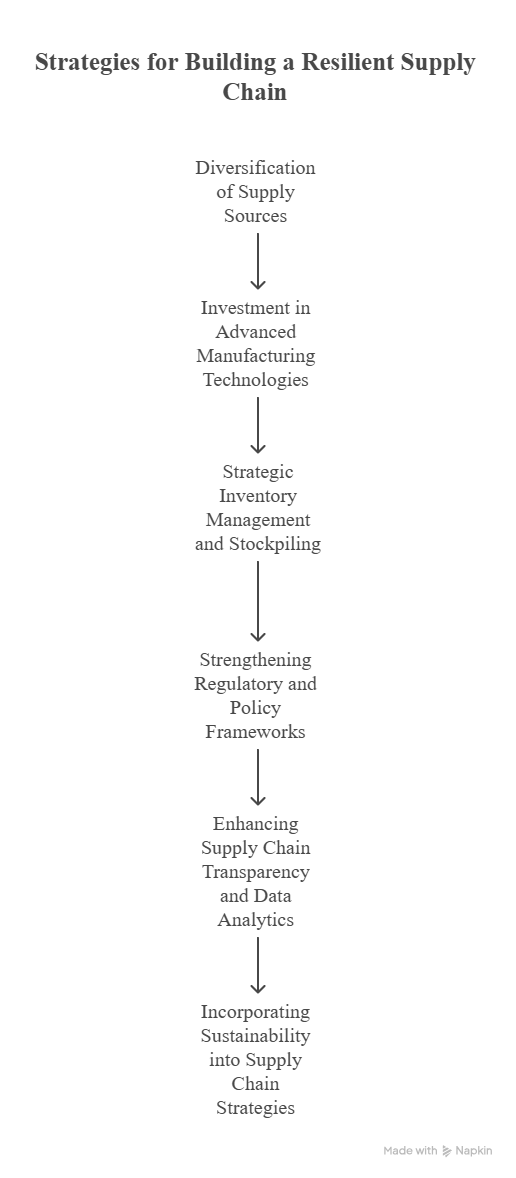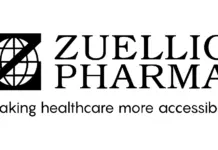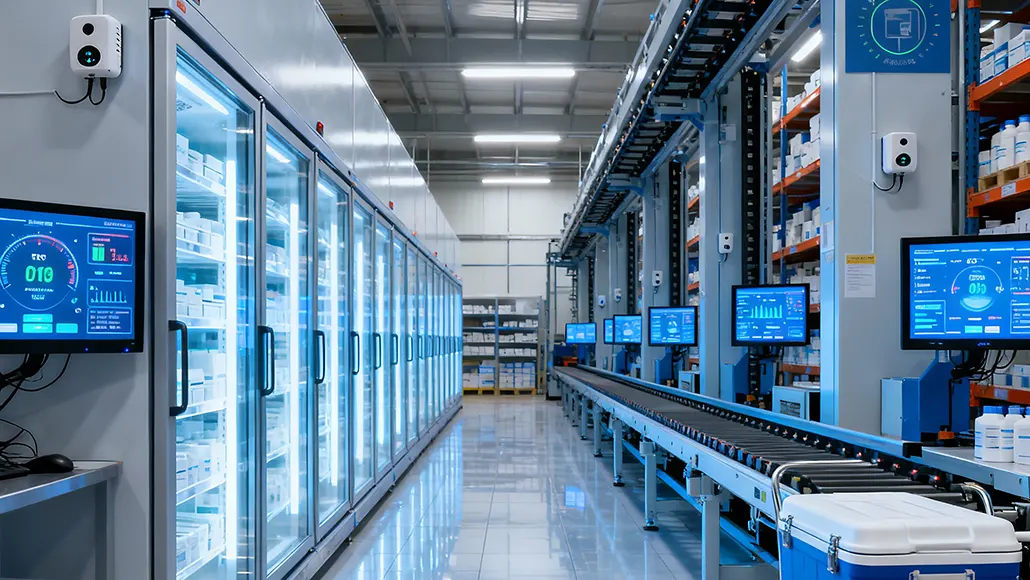The perinatal period—spanning from conception to the first year of an infant’s life—is a critical window for maternal health and fetal development. Ensuring that patients have access to appropriate medication is not only a matter of personal health at the individual and family level, but it is also very much a matter of policymaking at the public health level. Throughout the course of this critical period of time, there is increasing liability of the international supply chain of perinatal medicines, including prenatal vitamins, hormonal therapies, antibiotics, and other speciality medicines. We are experiencing unprecedented supply chain disruptions as a result of current geopolitical tensions, raw material price fluctuation, and pandemic-related supply shocks.
The underlying vulnerabilities with these supply chains have put maternal and neonatal well-being in jeopardy. Consistent with global trends, demand for these types of medicines continues to increase. Thus, developing a stable and secure supply chain for all perinatal drugs and medicines has never been more vital. With this knowledge, the focus must shift to strategic change through risk mitigation, diversification, technology, and policy change.
Understanding Supply Chain Vulnerabilities in Perinatal Medications
The current landscape reveals multiple vulnerabilities. They involve reliance on limited geographic areas for active pharmaceutical ingredients (APIs), being based on a narrow manufacturing facility base, and being exposed to international trade disruptions. For pregnancy-related conditions, drugs such as folic acid, iron supplements, and hormonal therapies—any disruption can result in negative consequences.
Global supply chains are complicated by these vulnerabilities. The process of sourcing raw materials from all over the world, converting them to APIs, and then having finished products manufactured in multiple jurisdictions adds complexity. The obscuring of supply chain processes and lack of real-time data contribute to the risks of global supply chains, often leading to production delays, stockouts, or downstream product quality issues. In addition, regulations across geographies introduce more complexity by causing additional delays with approvals and coverage for import and export of goods across borders.
Market trends suggest that the increasing incidents of pregnancy-associated illnesses will continue to rise, as well as the deployment of maternal health programs, will drastically increase demand for perinatal medication. Thus, it is imperative and essential that robust supply chain capabilities are developed, which can respond to and recover from shocks and maintain supply continuity.
Strategies for Building a Resilient Supply Chain

- Diversification of Supply Sources
One of the most effective strategies to mitigate risk is diversification of raw material sources and manufacturing sites. Diversifying away from a few API suppliers, especially if they are geographically clustered in geopolitical hot spots, will greatly mitigate risk. Having multiple sourcing arrangements spread out across different geographies guarantees sustained supply even if one source is disrupted.
Producers should also look for opportunities with new prospective businesses located in politically and economically stable countries. Plant production either local or regional, can alleviate long logistics chains thus shortening transportation time and global trade contingencies. These regional centres can serve proximate markets, compressing lead times and cushioning against global shocks.
- Investment in Advanced Manufacturing Technologies
Technology plays a crucial role in boosting supply chain resilience. Investment in continuous manufacturing, automation, and quality control systems supports scale-up or downscaling of production rapidly in accordance with fluctuations in demand. Innovative manufacturing methods like 3D printing of drugs and production in bioreactors can offer flexibility and less reliance on conventional supply chains.
Installation of real-time monitoring systems, such as Internet of Things (IoT) sensors, can offer detailed information regarding production processes, inventory, and logistics. This could lead to predictive analytics and allow businesses to predict potential disruption and eliminate disruption in our supply chain.
- Strategic Inventory Management and Stockpiling
Maintaining strategic reserves or buffer stockpiles for key perinatal products still holds true today as an effective strategy. These reserves can dampen supply shocks through a short-term disruption to supply, particularly in an emergency or when logistical factors change. Adequate inventory management principles must weigh the cost and risk of holding excess inventory with the need to respond quickly when an emergency arises.
Utilising predictions better—improving forecasting models by combining epidemiological data, market forces, and systematic real-time supply chain analytics—all combine to optimise inventory levels and minimise waste to assure availability. Digital platforms with end-to-end visibility to streamline procurement, inventory, and distribution pipelines are essential.
- Strengthening Regulatory and Policy Frameworks
Policy interventions are important in developing supply chain resilience. Harmonising regulatory standards at regional levels facilitates approval processes and enables faster responses to crises. Governments must provide incentives for investment in domestic manufacturing capacity, particularly in underserved areas.
Collaborative work internationally could be in terms of shared stockpiles or joint procurement agreements and knowledge-exchange platforms. Transparency and data-sharing policies among stakeholders are also evocative of greater trust and coordination.
- Enhancing Supply Chain Transparency and Data Analytics
Transparency is pivotal to resilient supply chains. Blockchain technology improvements are able to provide immutably documented provenance, manufacturing processes, and product distribution paths to support proving authenticity and tracing.
The technology of real-time analytics, using artificial intelligence (AI) and machine learning, enables predictive forecasting of supply interruptions, demand increases, and logistics backlogs. These projections provide the grounds for decision-makers making procurement, production, and distribution changes in real-time.
- Incorporating Sustainability into Supply Chain Strategies
Sustainability is no longer optional. Sustainable procurement practices, socially responsible manufacturing, and circular economy thinking entail reducing the environmental footprint of supply chains and increasing their resilience. Green logistics, i.e., route optimisation and low-carbon transport, can also make supply chains more resilient to disruption by climate-induced events.
The Role of Digital Technologies in Shaping Resilience
Digital transformation may have the potential to transform the perinatal drug supply chain. Tools like digital twins, which provide an opportunity to create virtual versions of supply networks, allow for simulation of scenarios like demand peaks or disrupted logistics, supporting contingency planning. AI-driven forecasting models have the ability to forecast demand fluctuations and tune inventory and procurement cycles.
Real-time tracking technology, featuring GPS and IoT sensors, increases transparency throughout transport and storage, minimising loss and spoilage. Cloud-based systems enable comprehensive information sharing between manufacturers, regulators, and healthcare providers, providing transparency and quick response capacity.
Moreover, blockchain can also provide a degree of assurance around product quality and provenance, especially for sensitive medicines such as those offered to mothers and babies in the perinatal period. These digital innovations are key to developing box responsiveness and a resilient ecosystem to manage disruption, market changes, and evolving requirements.
Industry Collaboration and Stakeholder Engagement
Resilient supply chains must include co-development between governments, manufacturers, health organisations, and logistics. Public-private partnerships can develop a strategy for regional manufacturing hubs, collaborative inventory buffers, and cooperative research.
Global health agencies can be more overt in assessing data openness, transparency, and shareability to trace and mitigate supply chain vulnerabilities. All stakeholders must adopt interoperability standards and common protocols that allow for unobstructed communication and coordination across disparate jurisdictional boundaries.
Involving the local population and health workers gives insight and understanding of local needs that can be leveraged to produce targeted solutions that optimise supply chain functionality at the local level.
Long-term Outlook and Future Trends
The future of the perinatal pharmaceutical supply chain will depend heavily on technological innovation and policy support and collaborative resilience and survivability projects. New and emerging trends will transform supply chain models, including but not limited to personalised medicine, blending digital technology into health care, and additive or 3D manufacturing.
Market forecasts show that the growing emphasis on sustainability will see producers further utilising green methods, emphasising circular practices. Investment into local manufacturing, especially when entering new markets, will allow organisations to reduce dependencies and strengthen the local ability to self-manage.
Also, the combination of AI-based predictive analytics with blockchain visualisation will give the supply chain system the agility, flexibility, and responsiveness to be able to pivot quickly from a crisis to a demand peak.
Conclusion
Ensuring a perinatal drug supply chain that is resilient is the key to protecting maternal and neonatal well-being globally. The approaches herein—diversification, investment in technology, inventory control, advocacy through policy, and digital innovation—will be essential to creating a system of supply that is strong, agile, and transparent. With the sector facing multifaceted challenges, adopting these holistic strategies will be essential to providing uninterrupted access to medicines at the most formative life milestones. The way ahead requires active cooperation, investment, and a firm commitment to sustainability and innovation, ensuring the well-being of generations to come.
























